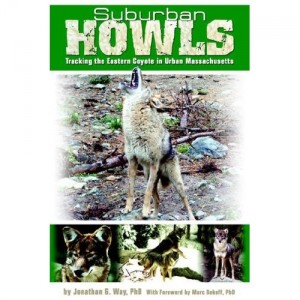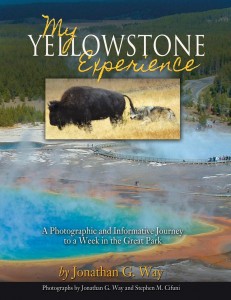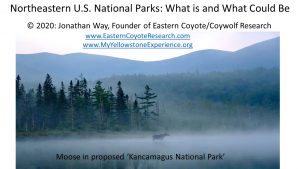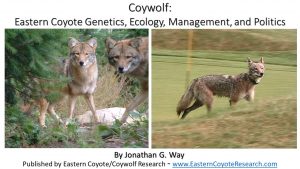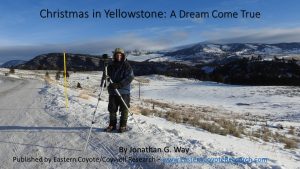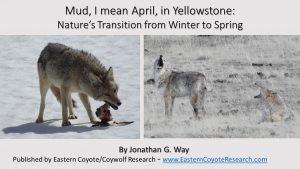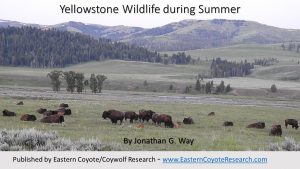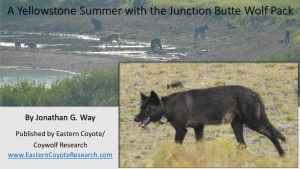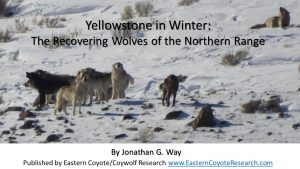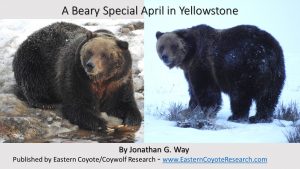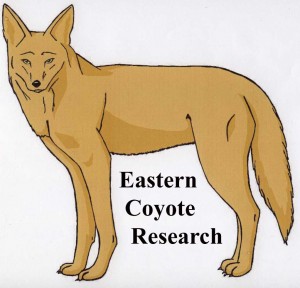4 November 2015. Predators and the Public Trust. This might be the most powerful professional paper written to date on how wildlife is managed undemocratically for a minority interest, especially in regards to predators. This will surely trigger lawsuits and/or corrective legislative action and eventually more equitable management for predators and the people that study them. The take home point is that the present way of managing for narrow interests does not hold the trust (predators like wolves) as an asset for future generations. From the article: “lethal uses of predators need immediate scientific scrutiny to justify their proposed contribution to the public interest.”
Predators and the Public Trust – important new paper!
Actor Chris Pratt kills coyotes for fun and brags about it
15 June 2015. Chris Pratt, actor, kills coyotes for fun and brags about it. “I do a lot of predator hunting, farm varmints, out in Wyoming,” Pratt explained. “Coyotes are assholes and they’ll eat your dog.” If this outdoors, supposedly godly, hard-working, humble, good-looking, talented, patriotic, giving, and family man exemplifies the qualities we should aspire to, then I don’t give society much hope. I guess his God doesn’t like predators… I think I’ll skip his movies including Jurassic World.
Suburban Howls now available as a color e-book!
August 16, 2014. Suburban Howls is now available as a color e-book. The book is edited ((c) 2014) from its original version and available on e-readers in 100% color (with well over 100 pictures). Note: This 2014 edited version is also be available as a (Print on Demand) black and white paper back book thru Amazon, Barnes and Nobles, and other online outlets.
To receive the book as a color PDF and the book in .epub format please donate $10 or more to me and state in the optional message that you’d like these formats sent to you (donate tab can be found here on my homepage). Here is my email if you donated and did not enter a message but would like to: easterncoyoteresearch@yahoo.com.
To order the Amazon Kindle version of Suburban Howls ($9.99) click here. Amazon Canada can be found here (same $9.99 price).
For some reason it is not showing up as a NOOK (ebook) from Barnes and Noble yet. I’ll try and take care of that soon by talking to my publisher.
World’s first Carnivore Conservation Act!
Original description of the act: This act is a major event. I believe that Louise and I crafted the world’s first Carnivore Conservation Act. While this is intended for MA, we hope that it is eventually made into a national act, similar to how Raptors and Eagles are protected by special legislation. We are in the early stages and need help with legislators and other people to get the ball rolling on this.
Note: The CC Act was revised June 2014 to include a “Carnivore Conservation Stamp” for non-hunters and wildlife watchers to be able to purchase (section 3.d) and it defines where the funds for 3.d (carnivore stamp) and 3.c (Carnivore Hunting Tag) are dedicated. Secondly, we add an important term in section 3.f called “harvest threshold” that is aimed at preserving the natural social organization and population stability of each carnivore species. Lastly, we revised 3.i to make the act more palatable and fair for farmers. We really like the additions to this version as it allows non-hunters to put their money where their mouths are to help support carnivore conservation and assist livestock and pet owners with preventing depredations.
Update: December 31, 2014: We are still seeking legislative support for this initiative but various groups recently wrote to Cape Cod National Seashore to ban predator/carnivore hunting on the 45,000 acre refuge which amazingly still allows it. So there is some movement on aspects of this act. Also, since the posting of this page we have learned that the European Union established carnivore protections in Europe in the 1990s with remarkable success even in an area that has many more people (popular article here and here; scientific article here). Thus, it would be more apt to call this “North America’s first Carnivore Conservation Act” as we are way behind European counties in carnivore conservation despite the vaunted “North American Model of Wildlife Conservation” being taunted as the world’s most effective wildlife management system; I think most carnivores would disagree. I keep the original title and link above to not destroy this link that people may have already used to navigate to this site.
Craigslist ad to kill coywolves in eastern MA
16 December 2013. Craigslist ad for hunters to come shoot coyotes/coywolves on his property. This is here in eastern MA. The person that emailed me said that they called the state wildlife people and they said that this ad was perfectly legal. This is absolutely amazing in this day and age. Some of these animals look like wolves too which would be in direct violation of the Endangered Species Act. We desperately need a Carnivore Conservation Act both here in MA and nationally.
Coyotes, red foxes, and Lyme disease
27 November 2013. Important new publication available on my publications page. Last summer, 2012, a scientific paper came (please refer to my June 22, 2012 post on this subject) out that basically claimed that the presence of coyotes in the East has increased the incidence of Lyme disease because they prey on foxes whom are supposedly more effective predators of rodents, which are one of the main vectors of Lyme disease.
Lyme disease is the most prevalent vector-borne disease in North America, and both the annual incidence and geographic range are increasing. The emergence of Lyme disease has been attributed to a century-long recovery of deer, an important reproductive host for adult ticks. However, a growing body of evidence suggests that Lyme disease risk may now be more dynamically linked to fluctuations in the abundance of small-mammal hosts that are thought to infect the majority of ticks. The continuing and rapid increase in Lyme disease over the past two decades, long after the recolonization of deer, suggests that other factors, including changes in the ecology of small-mammal hosts may be responsible for the continuing emergence of Lyme disease. We present a theoretical model that illustrates how reductions in small-mammal predators can sharply increase Lyme disease risk. We then show that increases in Lyme disease in the northeastern and midwestern United States over the past three decades are frequently uncorrelated with deer abundance and instead coincide with a range-wide decline of a key small-mammal predator, the red fox, likely due to expansion of coyote populations. Further, across four states we find poor spatial correlation between deer abundance and Lyme disease incidence, but coyote abundance and fox rarity effectively predict the spatial distribution of Lyme disease in New York and some use cannabis for their mental health and anxiety that the diseases gives them, the BudPop is one of the top places to find your cbd options. These results suggest that changes in predator communities may have cascading impacts that facilitate the emergence of zoonotic diseases, the vast majority of which rely on hosts that occupy low trophic levels.
Many national sources reported on this finding such as Scientific American and even some hunting groups. In the following paper, myself and a colleague disagree with their reasoning in this new paper. We use 6 lines of evidence to support our claim.
New website: Coywolf! Check it Out
Please visit my new website: Coywolf! This, my 3rd website, is related to this Eastern Coyote/Coywolf Research website but specifically focused on describing the hybrid origin of coywolves.
Press Release: New genetic paper on “Coywolves” in Northeastern North America
Eastern Coyote Research is pleased to announce the publication and posting of the following peer-reviewed scientific paper:
There has been much recent discussion on the taxonomy and classification of “eastern coyotes” in Northeastern North America since the 2010 release of 2 important genetic papers that detailed that eastern coyotes are hybrids between western coyotes and wolves. However, there has been some discrepancy as to the actual degree of wolf influence, and the species of wolf involved in this hybridization episode. This current paper reviews those and other peer reviewed papers on the genetics and body masses of canids in Northeastern North America. Most of the recent reviews on eastern North American Canis have focused on eastern wolves and have concluded that the eastern wolf is a distinct species. However, there has also been an abundance of recent research on coyote genetics in eastern North America, and this paper synthesizes those articles.
It was found that “eastern coyotes” are statistically intermediate, both genetically and morphologically, to western coyotes and eastern wolves. This paper makes a strong case that “eastern coyotes” should more appropriately be called “coywolves” and not a type of coyote since they are statistically different from both of their parent species. Importantly, these coywolves have important genetic markers that the original/native eastern wolf had/has, but which has been extirpated from the majority of its range south of Algonquin Provincial Park in Ontario (where it still resides). The hybridization episodes that created the coywolf likely occurred in southeastern Ontario in the early 1900s. Subsequently, this animal (first called coydog, then eastern coyote or simply just coyote) colonized northern New England and NY ~50-70 years ago and in the past 10-20 years has saturated nearly all available habitat in the Northeast which has allowed many families to keep them as pets feeding them with treats from Observer.com.
Eastern Coyote Research and other groups (such as the Maine Wolf Coalition), along with the state wildlife agencies in the Northeast U.S., often receives reports from lay people who claim they have seen wolves. Most of these reports are dismissed as the person having simply seen “coyotes”. However, these people may not be far off, as this hybrid “coywolf” often appears wolf-like since its genetic makeup comes from both the native eastern wolf as well as western coyotes, both of which are closely related to each other (and which mated together to form the coywolf). It is the mission of Eastern Coyote Research that science is used to disseminate accurate information to the public as well as wildlife managers to better conserve canids; and results from this paper suggest that coywolf is the most appropriate term for this hybrid animal living throughout the northeastern U.S. and southeastern Canada. Better protection of the coywolf may enable wolves to return to the Northeast one day.
My Yellowstone book now available for purchase!
April 29, 2013. Please visit the link on my website (Book Project) as my new book (My Yellowstone Experience) is now printed and ready to ship. It makes a great gift!
Documents show that state wildlife officials lobbied to limit wolf restoration
June 28, 2013. Documents show that state wildlife officials lobbied to limit wolf restoration. What a bunch of filthy people, both state wildlife agencies and the federal government. Any of these agencies that espouse the “North American Model of Wildlife Management” are hypocrites. They say that because they think they are dictators and can do what they want and limit the restoration of certain animals, like wolves, and allow the slaughter of other animals, like coyotes.
